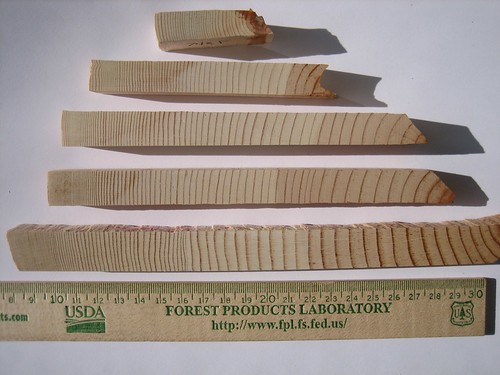
The Ring Profiler may sound like the title of fantasy novel but in fact it’s an innovative tool U.S. Forest Service scientists are using to better determine how much a tree grows annually.
Developed by the Forest Products Laboratory in Madison, Wis., the Ring Profiler may have significant implications in forest management and climate-change studies. It allows researchers to accurately determine both the age of a tree and how much mass it has accumulated over time. Studying a tree’s rings in the traditional way can be difficult when its growth has been suppressed due to stand overcrowding or climate-related effects such as a lack of moisture during the growing season.

The Ring Profiler allows researchers to clearly see the densely packed rings of a suppressed-growth tree. This innovative tool illuminates a wood sample from the sides, allowing the wood cells to act like fiber optic conductors. The light is internally reflected within the cell walls, producing a high-contrast image of the cellular anatomy when viewed under magnification. This technique makes it easier to measure the cellular structure of the wood fibers as they change shape throughout the growing season, making it possible to calculate the rate at which a tree accumulates mass over time.
The Forest Products Laboratory is now working on automating the process and developing an instrument that could be used by forest managers to more accurately assess the growth characteristics and carbon sequestration potential for trees which would improve forest health and aid in restoration efforts. The Ring Profiler has been patented. Interested industrial cooperators should contact the Forest Products Laboratory for more information on product development.
